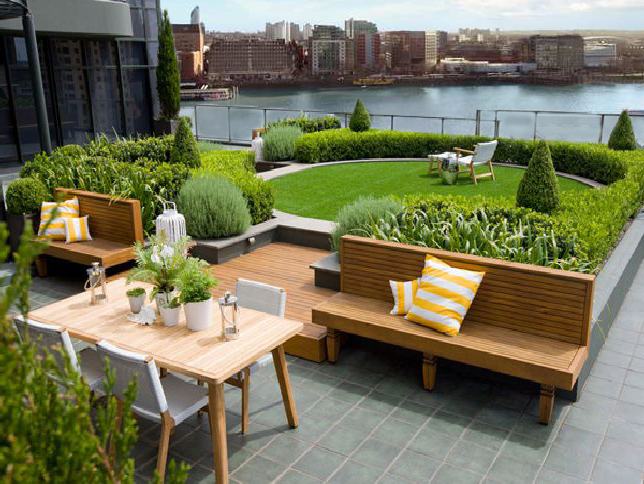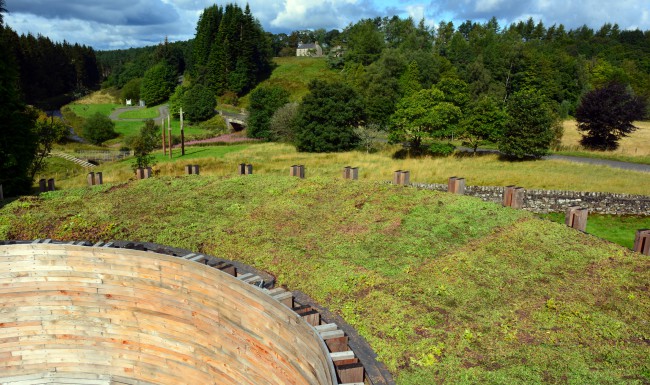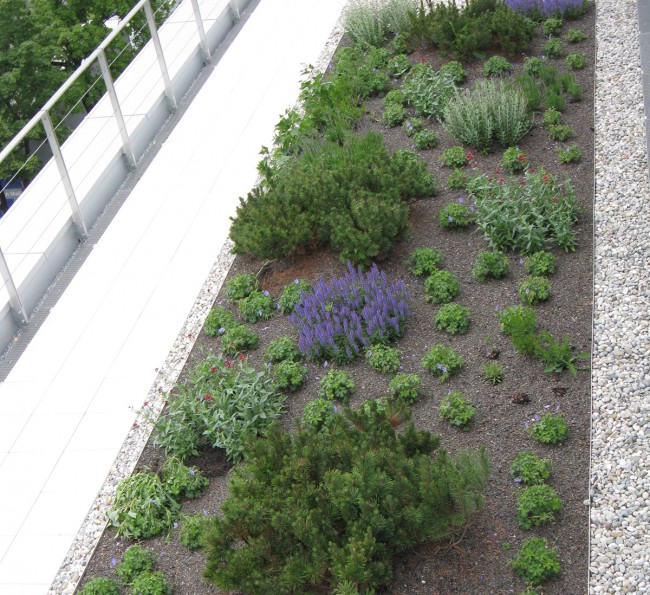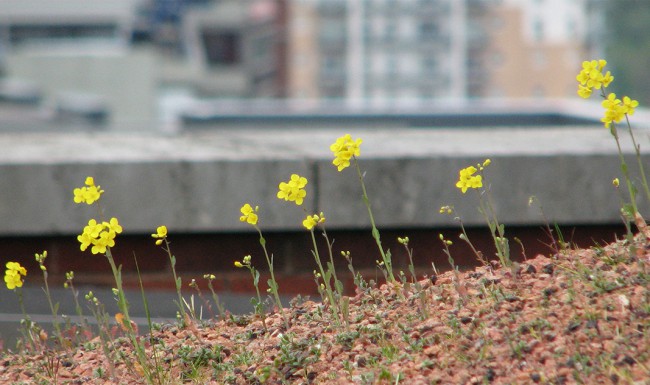Green Roofs come in many different forms, specified to suit individual needs.
EXTENSIVE GREEN ROOFS
Extensive green roofs provide a light-weight, low maintenance, instant ‘green effect’ roof solution, and are the most common type of green roof we supply. Extensive green roofs are not usually intended for general public access, and are chosen mostly for their ecological benefits.
Typically, extensive roofs use a Sedum vegetation due to it’s ability to flourish in harsh environments, cost effective, and lightweight system requirements. Extensive green roofs can be designed into new buildings, or ‘retro-fitted’ onto existing buildings.
Typically, extensive green roofs use a variety of Sedum or Wildflower plants due to their versatility in extreme weather conditions, drought resistance, ability to aid with biodiversity, and year round green effect.
Plug planted green roofs offer the opportunity to provide a customised planting system, and can also be beneficial when retrofitting buildings with difficult access.
Seeded roofs offer a cost effective green roof solution that expect to germinate and flourish within 6 months.
SEMI-INTENSIVE GREEN ROOFS
Our semi-intensive green roof systems include a richer, deeper substrate and drainage solution compared to extensive roofs, enabling use of a wider range of complex plant mixtures. Semi-intensive roofs are generally used within highly visible area’s to improve aesthetic design using small shrubs, forbs, and grasses. They require a higher level of maintenance compared to extensive roofs, due to the vegetation, and substrates used.
Our semi-intensive green roofs have the ability to use of a wider range of complex plant mixtures and small shrubs due the deeper, nutrient rich growing medium used in their construction.

INTENSIVE GREEN ROOFS
Intensive green roofs are intended to replicate what can typically be found at ground level in the natural landscape, and in green spaces such as parks or cultivated gardens.
Intensive green roofs involve intense landscaping, and are suited to roofs with a highly visible presence or public access, and commonly referred as a ‘roof garden’. Choices include shrubs, native forbs and grasses, larger perennials, tropical, non-native vegetation.
Our intensive green roof systems offer limitless creative choices. We use a customised range of shrubs, native forbs and grasses, larger perennials, and even small trees can be included, designed to suit the needs of the individual project and enhance environments in an aesthetic way, or flow seamlessly within a buildings design.



